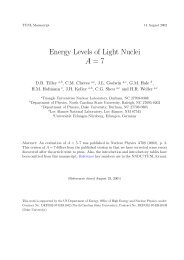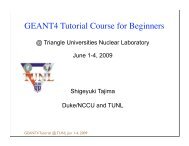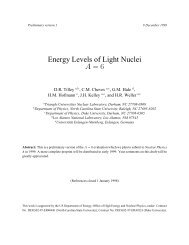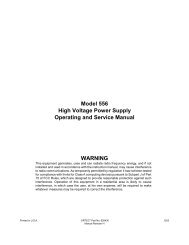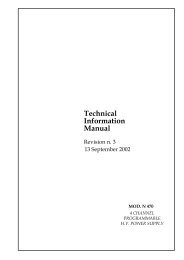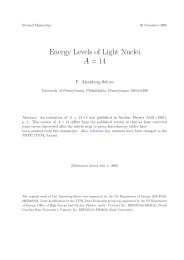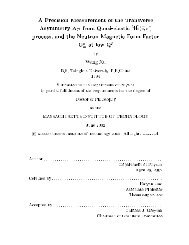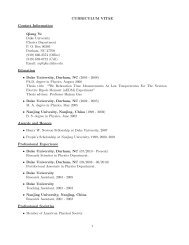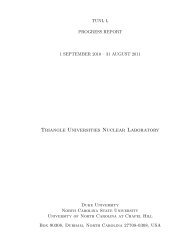Introduction to Nuclear reactions
Introduction to Nuclear reactions
Introduction to Nuclear reactions
You also want an ePaper? Increase the reach of your titles
YUMPU automatically turns print PDFs into web optimized ePapers that Google loves.
Compound Reactions<br />
a + X --> C* --> b + Y<br />
Independence hypothesis:<br />
The decaying compound nucleus, C*<br />
has no “memory” of how it was formed.<br />
Excitation functions; graphs of σ vs.<br />
incoming particle energy.<br />
dotted line: 63 Cu(p,n) 63 Zn<br />
63<br />
Cu(p,2n) 62 Zn<br />
63 Cu(p,pn) 62 Cu<br />
60<br />
solid line: Ni(α,n) 63 Zn<br />
60<br />
Ni(α,2n) 62 Zn<br />
60 Ni(α,pn) 62 Cu<br />
For both sets of experiments,<br />
we see the same resonances,<br />
reflecting states of the<br />
compound nucleus 64 Zn<br />
(“nuclear structure”)


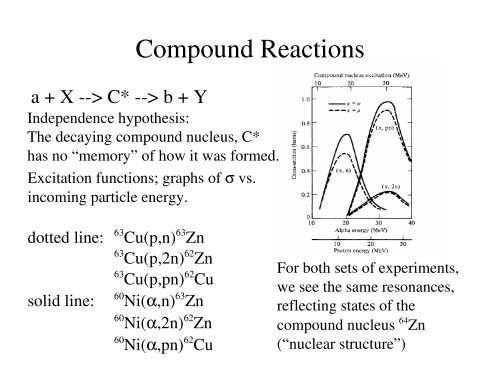
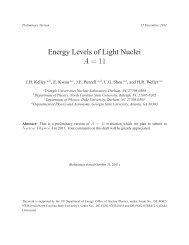

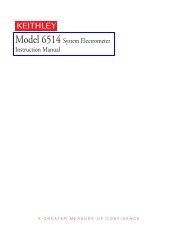
![TUNLXXXIV.tex typeset [1] - Triangle Universities Nuclear Laboratory](https://img.yumpu.com/47618358/1/190x245/tunlxxxivtex-typeset-1-triangle-universities-nuclear-laboratory.jpg?quality=85)
